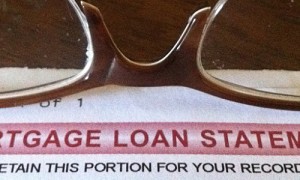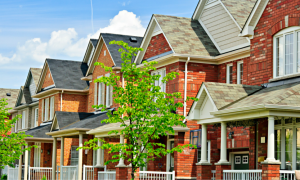In the first post of the series, we explored why homeownership is a cornerstone of the American dream. In today’s post, we’ll learn more about the programs prospective home buyers can tap for assistance.
For better or for worse, the federal government has consistently aligned itself with homeowners, dating to the beginning of the republic. The biggest challenge home buyers face is how to earn and accumulate enough money to buy a home. There are two main obstacles: high down payments and monthly costs. The government addresses both.
One of the most important programs for supporting homeownership, according to Robert Dietz, chief economist for the National Association of Home Builders (NAHB), is government backing of the traditional 30-year mortgage. Stretching home payments over so long a period minimizes housing costs, and that 30-year option would likely not exist if left to the private sector.
“The modern mortgage system enables affordable, predictable mortgage access for all local markets,” said Dietz. “Absent a federal backstop, available housing finance products would vary market to market, which could exacerbate local economic downturns through a constriction of housing finance products.”
Government support for mortgage lending takes several forms. There’s Federal Housing Administration loans for one, which have solved the down payment issue for millions of homebuyers since their inception during the Great Depression. Dietz said FHA financing is especially critical for first-time homebuyers. Some 17% of new homes were sold to FHA borrowers during the three months ended June 30. A high percentage of existing homes also went to FHA borrowers.
Here’s how the program works: The FHA does not issue the loans directly, but insures mortgages from regular lenders. Buyers can put as little as 3.5% down and still qualify for a loan. The mortgage rate, and monthly payments, are higher because buyers pay the insurance costs (usually less than 1% of the mortgage balance annually), but the program serves as an entree to homeownership.
On a house costing $200,000, for example, a homebuyer would normally be asked to put 20%, or $40,000 down. Many young homebuyers simply do not have that much cash. At 3.5%, however, the down payment is only $7,000.
In addition, as many as 40,000 homebuyers a year may qualify for the FHA’s American Dream Downpayment Initiative, which helps needy families with both down payments and closing costs. The FHA also accepts buyers with lower credit scores than most conventional lenders will.
Other government backing is provided by Fannie Mae and Freddie Mac. Fannie began as a New Deal agency in 1938. Freddie came into being in 1970. Both do pretty much the same thing: increase mortgage liquidity.
They do this by buying up mortgages from private lenders, pooling and securitizing them, and selling the securities on the open market. That enables lenders to quickly recoup the money they lend, so they can turn it around with loans to new clients. The intent is to have a steady stream of cash available for homebuyers and many lenders competing for the business.
This competition has kept mortgage rates more affordable. Historically, interest rates on 30-year mortgages have run only slightly higher than yields on 10-year T-Bills. Right now, that means an interest rate of just 4% or so for a fixed rate loan. Compared to the average credit card interest rate of about 16%, that’s almost free money. And the buyer’s monthly payment stays the same through the life of the loan — even as inflation increases the owner’s earning power. At an inflation rate of 2% a year, a mortgage payment will be 22% less, in real dollars, after 10 years.
Ginnie Mae is another New Deal agency working to make housing more affordable. In addition to backing FHA mortgages, it guarantees Veterans Administration mortgages as well as Department of Agriculture Rural Development and HUD’s Office of Public and Indian Land loans. For lenders, that means it’s safe to issue these loans and homebuyers are more able to find affordable mortgages.
There are also a number of more specialized government programs that benefit homebuyers. One example is the Good Neighbor Next Door program. It helps cops, firemen, teachers, and emergency medical technicians buy homes in redeveloping areas at a 50% discount. Buyers have to agree to live in these homes for at least 36 months. That can go a long way to revitalizing a struggling community by in-filling it with responsible, stable homeowners.
Fannie and Freddie also offer low cost houses through their foreclosed home sales. Fannie’s is called HomePath and Freddie’s HomeSteps. Not only are these homes sold at deep discounts to market prices, but the agencies also provide savings for buyers who learn the costs and responsibilities of homeownership. Complete a two-hour educational course in homeownership and buyers can save up to 3% of their closing costs.
In addition to these many programs that keep housing costs low, the government also provides direct help to some buyers in the form of grants — money that doesn’t have to be paid back at all. Recipients may include disabled buyers as well as ordinary buyers of homes in blighted communities. The feds know that homeowners will usually dig in their heels to make communities work again, and that will benefit all of society.
During the housing market crash, government-run programs proved a bulwark against further economic distress. Without government backed loans, mortgage lending would have ground to an almost complete halt, causing home prices to crash even more catastrophically. The agencies still play a vital role in keeping home buying costs low, enabling many more Americans to realize their home buying ambitions than could be achieved through private means.
Once a house is purchased, however, it doesn’t end government help for homeowners.
Next: What have you done for me lately? Government help — after the purchase.






